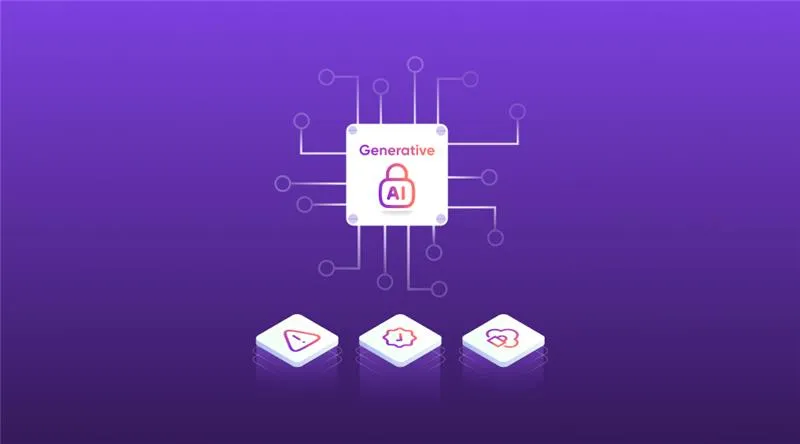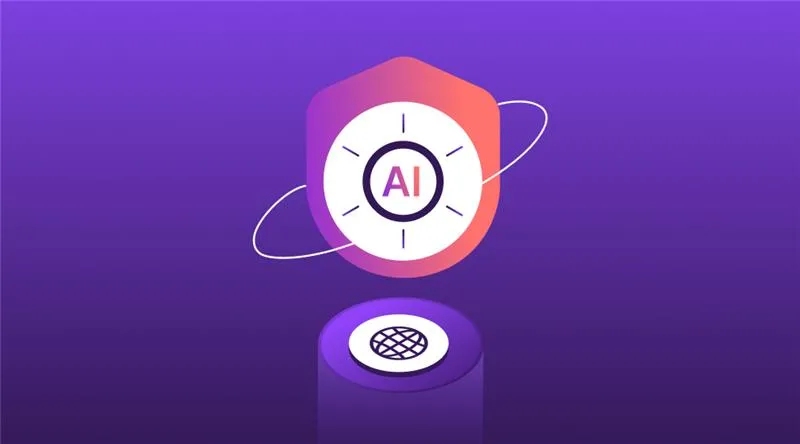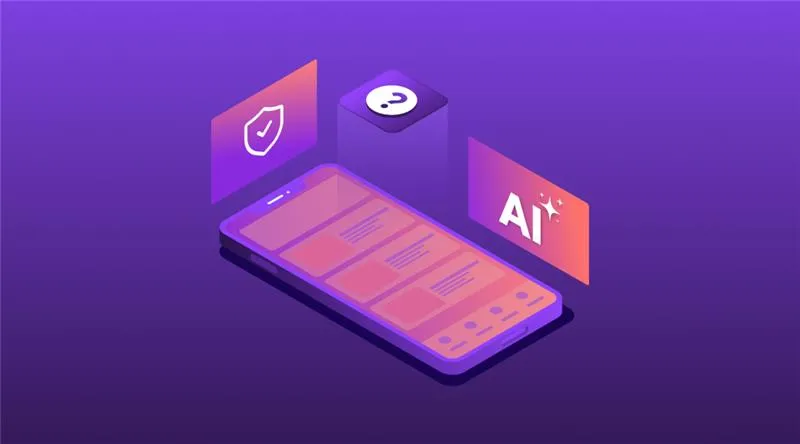Technology

5 min

Agentic AI is changing how businesses work by going beyond rule-based automation. In this guide, you’ll learn how it observes, decides, and acts in real time, the frameworks that power it, real-world use cases, and steps to build AI systems that boost productivity and cut manual work.

By Mayank Ranjan
11 Aug, 2025
Most businesses today still waste hours on work that doesn’t need human effort, ticket triaging, data entry, scheduling, and reporting. Your team stays busy, but growth slows. That’s the real problem.
Traditional automation can’t keep up with fast-changing demands. It follows rules but doesn’t think. This is where agentic AI changes the game. Instead of waiting for prompts, it acts with purpose. It can observe, decide, and take action across your systems, making decisions in real time.
According to McKinsey, companies using agentic AI systems achieved a 25% boost in productivity and reduced manual work by 40% within months. The takeaway is clear: if you still rely on static automation, you’re already behind.
In this guide, you’ll learn what agentic AI is, the best agentic AI frameworks, and how to build powerful agentic AI applications for your business. We’ll also cover agentic AI use cases, integrations, and examples from leading agentic AI companies and startups. Whether you run a fast-scaling startup or an enterprise team, this is your roadmap to AI systems that deliver measurable results.
Agentic AI refers to artificial intelligence systems that are designed to operate autonomously by perceiving their environment, setting goals, making decisions, and executing tasks, all without constant human intervention.
Unlike traditional AI systems that wait for commands, agentic AI acts on intent. They're capable of:
Agentic AI systems are multi-functional and self-improving.
For modern enterprises, agentic AI development and its framework are more than just efficiency. It's about enabling true digital teammates who can handle tasks, adapt strategies, and evolve as business needs change.
To build effective Agentic AI systems, you need to bring together several parts into a single loop that can make decisions like a human.
The first step in building agentic AI systems is the perception layer — the system’s ability to “see” the world.
The more real-time and multi-modal this layer is, the more adaptable your agentic AI application becomes.
Agentic AI is not just reactive — it remembers.
Short-term memory: Tracks conversation or task flow
These databases allow fast retrieval, so the AI can maintain consistency and evolve its behavior over time.
This is where the system defines what it is trying to achieve and updates goals as situations change.
Frameworks like AutoGPT or CrewAI rely on structured goal stacks to operate independently in agentic AI integration projects.
Here is the brain of the operation — where the AI plans how to achieve its goals.
Planning is what separates a basic automation script from a true agentic AI system.
A system is only as good as the tools it can use.
This action layer brings autonomy to life — enabling agentic AI applications to perform actions across your tech stack without waiting for human prompts.
Customer Success AI
Handles full ticket lifecycle, detects issue, sends tailored response, schedules follow-up, escalates when needed, zero human input.
Financial AI Assistance
Pulls market data, tracks KPIs, adjusts investment strategy, and generates insights for stakeholders in real-time.
Robotic Process Automation
In manufacturing, agentic AI schedules machines based on availability, performance, and predictive maintenance data.
Here’s your step-by-step process for agentic AI development that works in real business environments.
Start by identifying business pain points that:
Examples include lead qualification, ticket routing, report generation, and inventory reordering. The goal is to target tasks where human oversight adds little value, but accuracy and speed matter. A good AI development company will start here before writing a single line of code.
Select the framework that aligns with your goals:
These agentic AI frameworks offer reusable building blocks, so your generative AI development services team can cut development time and focus on customization.
To maintain continuity and avoid redundant actions:
Popular tools include Pinecone, LlamaIndex, and ChromaDB. This contextual backbone ensures your agentic AI application learns from past interactions instead of starting fresh every time.
An agentic AI system should not live in isolation. Connect it to your existing workflows:
These agentic AI integrations give your system the ability to act in real time across platforms. If your business already uses process automation, you can scale further by starting with a Generative AI Implementation that aligns with enterprise security and compliance needs.
Once connected, teach the system to think and act:
Decision-making is the leap from simple automation to true agentic AI systems that operate with purpose.
Autonomy is powerful, but it should be controlled:
Industries like healthcare, finance, and legal benefit most from HITL, where human judgment works alongside automation for maximum accuracy. This approach is also common in AI chatbot development services, where conversations need both personalization and compliance.
Not every framework is built the same, and picking the wrong one can slow down your agentic AI development or limit functionality. Here’s a breakdown of how to technically evaluate frameworks before building an Agentic AI Framework for real-world use cases:
Complexity Handling:
Speed of Deployment:
Goal Recursion and Autonomy:
Human Collaboration:
Scalability:
Tool Use Strategy:
Always validate in a test environment first. Check for latency, memory handling, and tool compatibility before going live.
Language & Model Tools
Tool Integration
Infrastructure
If you're looking for full-service AI Development Company support, make sure they're fluent in these stacks.
Agentic AI systems are already delivering real business value across multiple industries. These aren't just theoretical use cases. They're working now, saving time, cutting costs, and improving decisions. Here's how different B2B sectors are using agentic AI today:
In online retail, speed and scale matter. Agentic AI can help e-commerce teams keep up with massive product catalogs and changing customer behavior.
For e-commerce brands, this means faster operations and smarter customer experiences with less manual work. It's a real leap from traditional automation.
Software-as-a-Service companies face constant challenges with user onboarding, troubleshooting, and engagement, making agentic AI a game-changer.
This level of automation helps SaaS teams reduce churn and scale support without adding more staff. It's efficient and user-friendly.
In the world of finance, accuracy, trust, and speed are everything. Agentic AI is helping banks deliver smarter and safer services.
Financial firms that use agentic AI integration see faster processing times, better compliance tracking, and improved customer satisfaction.
Building, deploying, and scaling agentic AI from a proof-of-concept to production across teams and tools is where most businesses get stuck. Below are detailed, technical tips to help you roll out agentic systems smoothly and make sure they deliver real value across your enterprise.
Don't build a general-purpose agent from day one. That's a fast way to lose direction and overcomplicate your system.
Your agent isn't just a technical tool, it needs to drive measurable results.
a) Response time reduction
b) Cost per ticket closed
c) Increase in task automation rate
d) Revenue uplift from faster decisions
Agentic AI systems are never plug-and-play. They evolve with your data, users, and goals.
Agentic AI works across tools, systems, and sometimes sensitive data. So security and compliance can't be an afterthought.
For sectors like finance, healthcare, or legal, agentic AI must be compliance-first by design. Include legal, IT, and risk teams in your deployment planning.
The future of agentic AI is moving fast toward full autonomy, smarter decision-making, and seamless enterprise integration. As AI language models 2025 trends continue pushing limits, businesses will see AI systems evolve from simple task handlers to intelligent collaborators.
Companies investing early in generative AI development services are setting themselves up for long-term advantages. The next wave of agentic AI will not just support teams, it will lead projects, optimize decisions, and coordinate across departments. Here's what to expect:
The future of automation isn't rule-based bots. It's intelligent, autonomous agents that work like humans but faster, cheaper, and without breaks.
Whether you're building your first agent or scaling an entire Agentic AI development company, focus on frameworks, memory, tool integration, and constant learning.
Start with a clear goal. Build in layers. Monitor performance. And let your agents evolve. For those looking to expand automation across customer operations, don't overlook the value of AI chatbot development services as part of your broader strategy. Reach out to Quokka Labs, an AI development company for all AI development services.
Q 1. What are the five types of agents in Agentic AI systems?
Agentic AI systems can be designed using five main types of intelligent agents, depending on their capabilities:
These agentic AI applications are foundational for building advanced automation and decision-making systems.
Q 2. What is the best tool to build agentic AI frameworks?
There’s no single best tool; it depends on your goals.
LangChain is widely used for building agentic AI, with its modular design, memory features, and ability to connect with external tools.
If you need multiple agents working together, CrewAI and MetaGPT are great picks.
For fully autonomous agents that can run tasks in a loop, tools like AutoGPT and the Reasoning + Action (ReAct) approach are also popular.
Q 3. What are agentic AI systems built on?
Agentic AI companies and startups typically build their systems on a combination of advanced technologies, including:
When these components are combined, the result is a robust agentic AI application capable of autonomous reasoning, execution, and adaptation.
Q 4. How does agentic AI work?
Agentic AI works by combining perception, memory, reasoning, and action layers in a continuous decision-making loop.
It perceives input (text, images, voice, or API data), processes it using LLMs, applies contextual memory, plans actions based on defined goals, and executes them using integrated tools.
This approach enables real-world agentic AI use cases such as workflow automation, agentic AI in healthcare, and financial decision-making.
Q 5. What is the difference between generative AI and agentic AI?
Generative AI focuses on content generation like text, images, or audio. It answers prompts or creates outputs, but usually doesn't act beyond that.
Agentic AI, on the other hand, takes action based on goals. It uses generative capabilities but adds decision-making, memory, tool integration, and long-term autonomy.
Think of generative AI as a creator and agentic AI as an actor with intent.
Q 6. What is the best framework for agentic AI?
The best framework for agentic AI depends on your use case:
How to Develop a Web App: Step-by-Step Guide from Idea to Launch
By Sannidhya Sharma
5 min read
Top 11 Must-Have Features of a Custom Web Application in 2026
By Dhruv Joshi
5 min read
Generative AI Tech Stacks: Choosing the Right Tools for Scalable AI Development
By Dhruv Joshi
5 min read
Choosing Best Tech Stack for Web App Development: Performance, Cost, and Scalability
By Dhruv Joshi
5 min read

Technology

7 min
Generative AI is moving fast into enterprises, from banks to hospitals to government agencies. Adoption is rapid, but security planning lags. Unlike traditional systems, these models can be exploited through prompt injection, poisoned data, or manipulated to leak sensitive information. They are also misused for phishing, deepfakes, and malicious code.


Technology

7 min
AI-powered Web Application Firewalls (WAFs) go beyond static rules by using machine learning, anomaly detection, and predictive analysis to block zero-day threats, reduce false positives, and protect APIs at scale. Unlike traditional WAFs, they self-learn, adapt in real time, and cut operational costs while improving compliance and trust.


Technology

5 min
AI is redefining mobile app security by transforming how threats are detected, tested, and prevented. From continuous monitoring and fraud detection to compliance with regulations, AI ensures apps remain resilient against modern risks. This means safer apps, protected users, and stronger businesses. Investing in AI-driven security today builds trust, drives growth, and secures long-term competitive advantage.


Feeling lost!! Book a slot and get answers to all your industry-relevant doubts